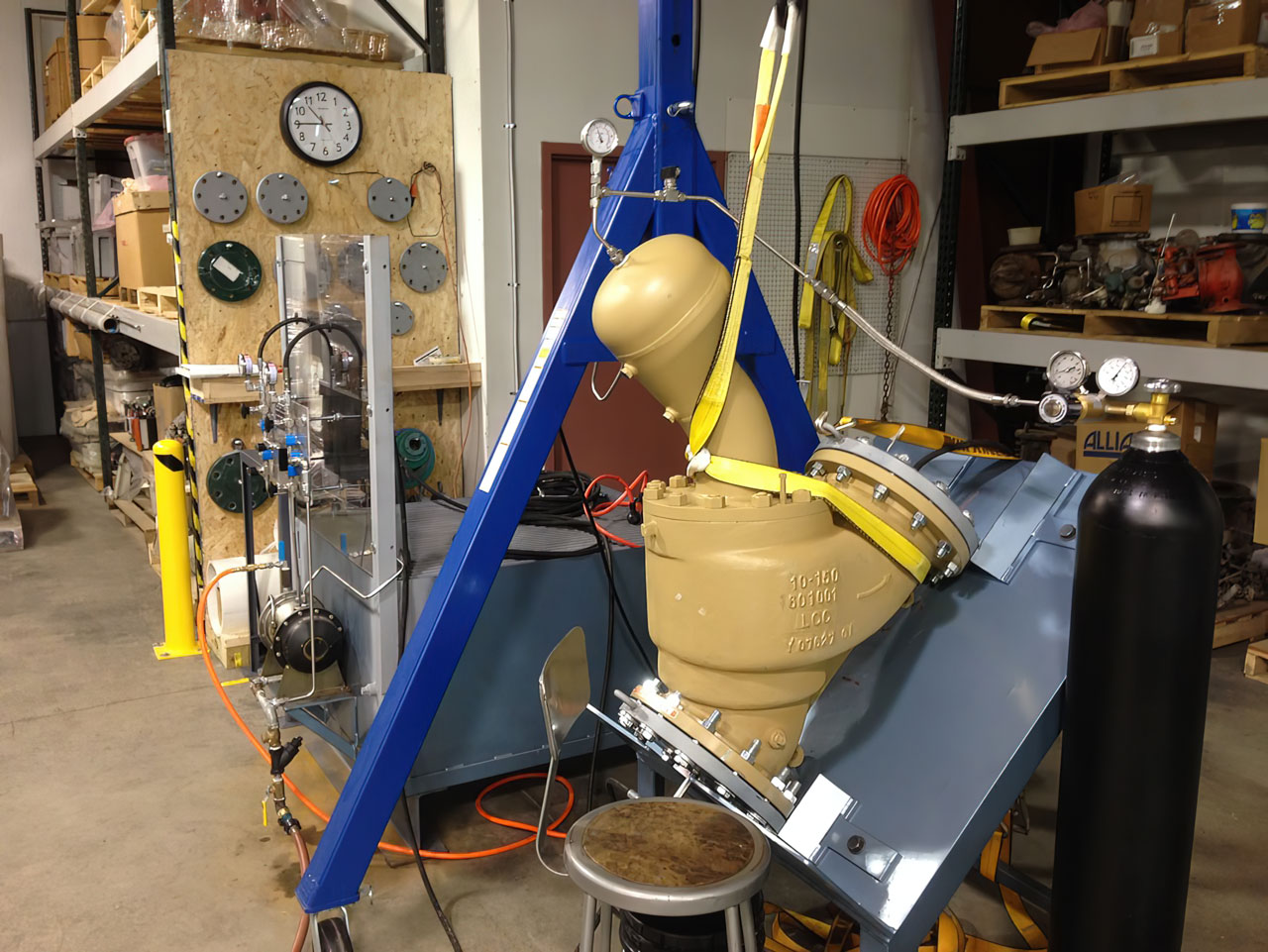Hydro Testing & Valve Re-Certification

Pressure regulating valves headed for service in a DOT Pipeline need to have the correct testing and documentation prior to installation. In conjunction with PMI and MTR’s, valves often require a pressure test to initiate the “Cradle to Grave” documentation that is going to stay with the valve throughout its life cycle. Although a shell test is critical, there are additional steps that should be taken.
Steps to perform include:
- Nitrogen loaded valves should be pressure tested on both the nitrogen side as well as the product side. Testing should ensure that internal seals do not allow transfer of nitrogen or product from one side to the other.
- The set point for pressure regulating valves should be confirmed.
- The seat should be visually inspected under pressure.
All aspects of the charted test are performed with certified and NIST traceable instruments. Photographs with the valves serial number and a clock in the background are taken throughout the test. Test duration is determined by the customer with typical test times ranging from two to four hours on the shell, and fifteen to thirty minutes on the seat. Pressures are 1.5 times MWP for the shell and 1.1 times MWP for the seat. Temperature is obtained internally from the valve under test, and not a remote bath. Valves being returned for re-certification are sandblasted prior to testing to ensure nothing is hidden by heavy layers of paint.
Liquid Meter Company can also shock-test nitrogen loaded surge relief valves with set points up to 600 PSI. This is done as an assembly with the valve, plenum and nitrogen controller. The test is designed to confirm both the valve’s set point, as well as the Maximum Allowable Pressure at the inlet of the valve.
When the valve ships, it is accompanied by a witnessed chart, test report, photographs, and instrument certifications. Contact us today to find out how we can provide a solution for your testing requirements.
